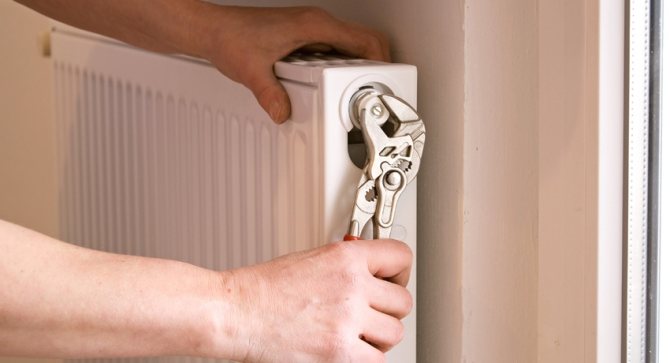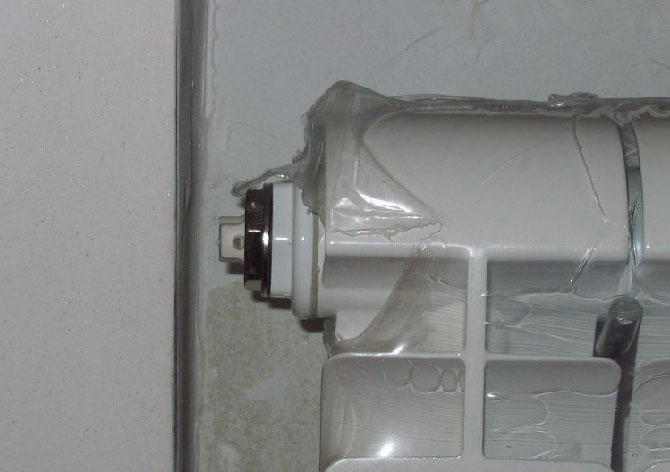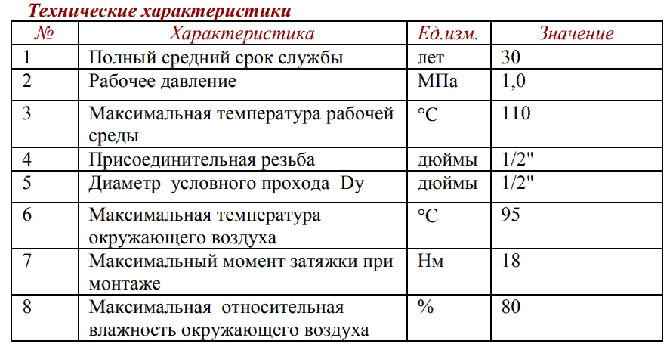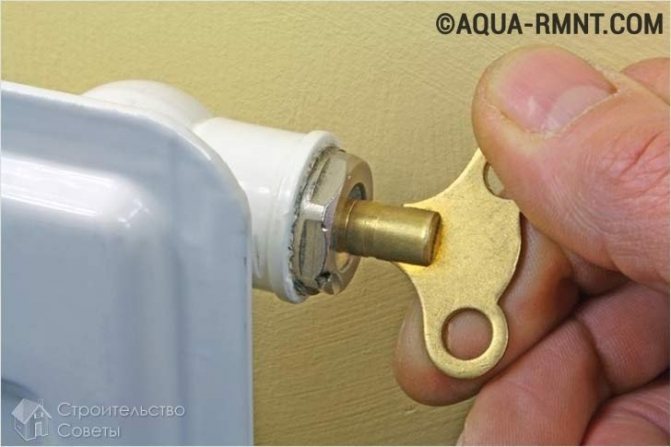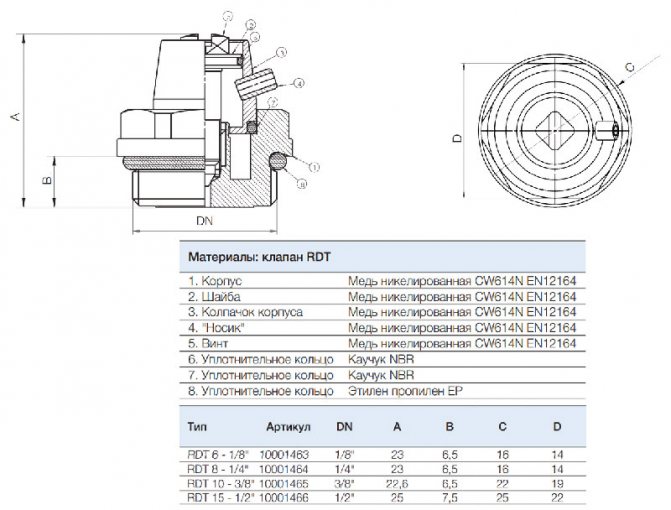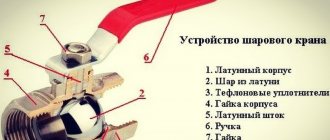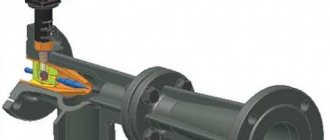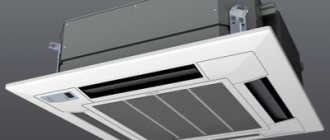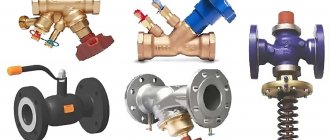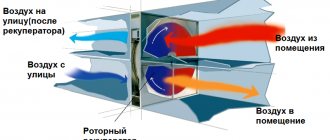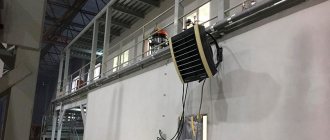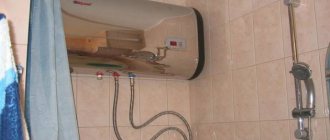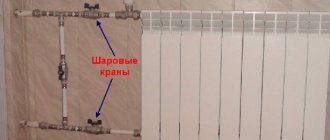Description of the Mayevsky crane
In whatever direction we consider the Mayevsky valve, it has compliance with its technological purpose and regulations within the industry standard, and is a valve for venting STD 7073V air from industrial or domestic heating systems.
The name of the Mayevsky crane is used only among the people. According to state standards, it is classified as a shut-off valve and is called a needle radiator air valve.
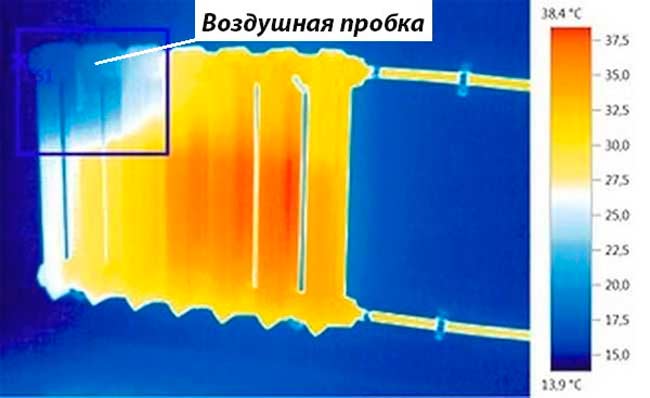
One of the most common problems that leads to malfunction of heating systems is the accumulation of air. The resulting plug prevents the fluid from circulating normally. As a result, the radiator with air inside reduces the performance of the entire system.
The coolant that circulates in the heating radiator plays the role of providing heat in the cold season. But it happens that the batteries do not warm up to the end. This can be due to the accumulation of air in the radiator and it prevents hot water from filling the entire radiator space. Therefore, this air must be somehow removed from there. It is for this that the Mayevsky crane works.
Mayevsky crane device
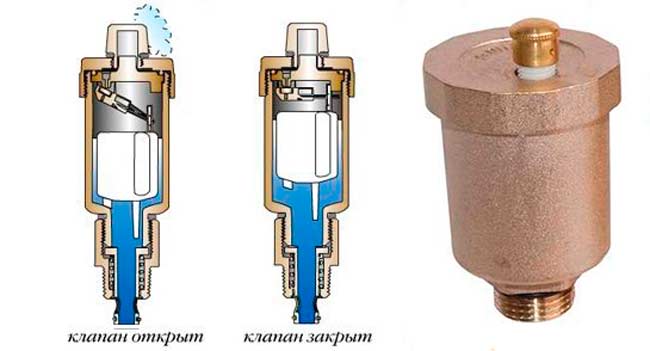

How to bleed the air from the tap? Its work is based on the principle of bleeding the air lock at the moment of loosening the check valve.
The valve of the Mayevsky valve is designed in the same way as a conventional valve, that is, the hermetic connection from a gaseous or hydraulic medium with high pressure to a medium with normal conditions opens and closes. The historical prototype of the modern design of the Mayevsky valve is an ordinary saddle-type water tap.
But when using a conventional water tap, there was an uncontrolled leakage of water from the heating system. For this, a special design of the crane was needed, which would make it difficult or completely eliminate the loss of liquid from the heating network. This problem was solved with the invention of the Mayevsky crane, which underwent a large number of improvements.
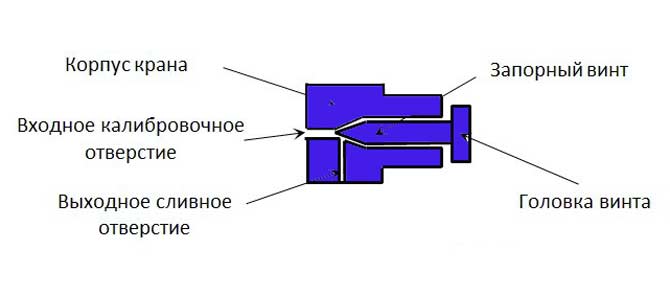

The Mayevsky crane was invented over 80 years ago. This very simple device is very effective and reliable. Therefore, it is still relevant.
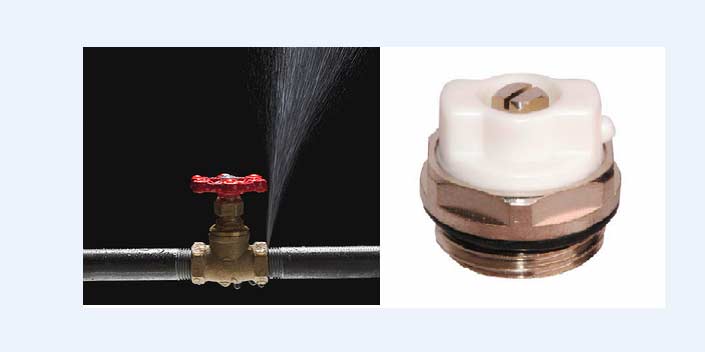

The tap is installed at the top of the heating radiators. It can be equipped with an automatic air vent or manually operated.
By opening the valve half a turn, air leaves the system and makes room for the coolant. This device is used for all types of batteries, even for old designs.
And where does the air come from in the heating system?
The appearance of air locks can be for several reasons:
- when installing heating systems;
- during repair work with the removal of fluid from the system;
- when installing a new radiator;
- in case of air leaks into the system during operation;
- as a result of a physical phenomenon (water emits air bubbles during any corrosion processes);
The latter often happens with aluminum batteries in urban buildings.
Auto
By itself, the Mayevsky crane cannot automatically remove air, this device is exclusively for manual removal of gases. However, with the same principle, automatic air vents are developed and produced, whose principle of operation is similar to the Mayevsky crane, and they do most of the work on their own.
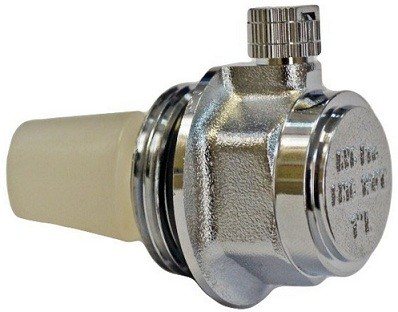

Automatic air vent RVC
The automatic air valve has a small vertical chamber to collect air. There is a float inside the chamber, which is rigidly connected to a needle valve located at the top of the device. As soon as the level of the air layer exceeds the permissible limit, the valve opens for a short time and air is released. Since the float also rises, the valve quickly returns to its seat and does not allow the coolant to flow out.
An automatic gas outlet is an indispensable element in an autonomous closed heating system. During the inevitable process of corrosion, the release of air bubbles from water or during the reaction of aluminum with water, if there is direct contact between them, gas pockets accumulate that can block the path of the coolant, or cause an overpressure. Air extraction solves these problems, moreover, without the participation of residents.
The device and operation of the Mayevsky crane
The Mayevsky crane is made using a brass alloy that is resistant to corrosion formations. Presented as a body with an internal cone needle valve. Due to the tapered shape of the end part of the screw, a tight fit into the through hole occurs. The hole diameter can be from one and a half to two millimeters.
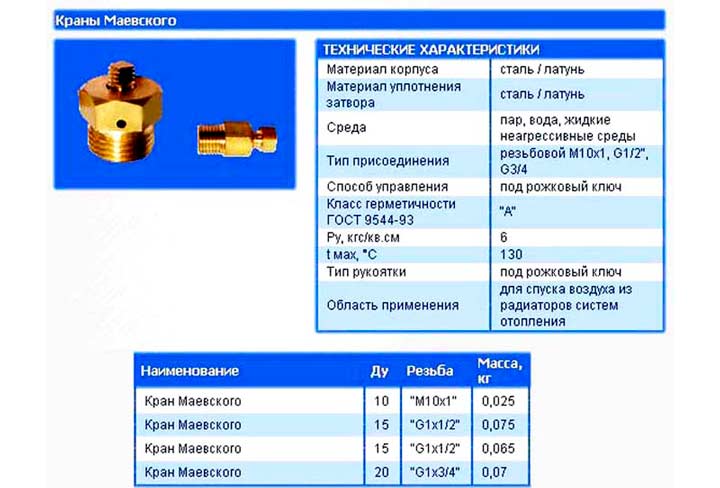

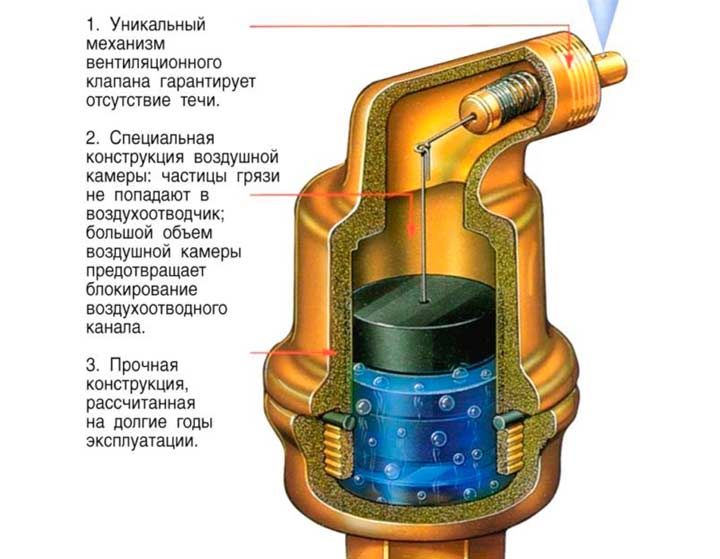

This valve is externally adjustable with a plug screw. The closed valve retains the internal heat carrier sufficiently reliably. Outside, the screw is represented by a hex or square head for a special key and a thread for a screwdriver. Longitudinal grooves are made on the screw body for the passage of air during valve opening. In this case, the air leaving the grooves is in the chamber, which is tightly closed with a cuff and has an exit hole of the same diameter as the through hole. Since the valve is mounted with a threaded connection with a gland gasket, and a closed valve hermetically closes the through hole, then when the heating system is operating, this valve provides the system with tightness. By turning the screw, a plug opens, releasing air from the radiator cavity.
The metal body of the Mayevsky crane is trimmed from above with a plastic casing, which makes the crane modern.
Crane devices can be of various modifications, but the principle of operation is always the same.
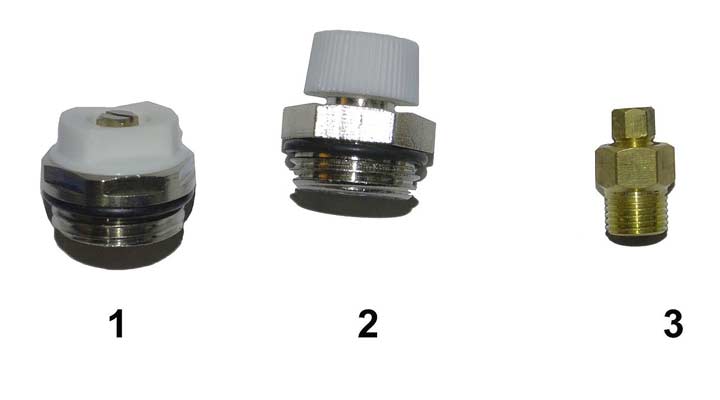

The diameter of the thread on the outside is different and therefore it is possible to select a suitable tap for any battery. The faucet can be with a thread size of 1 ", three quarters, one second". Also, the Mayevsky Crane Du 15, 20 and 25 mm is used not only in radiators, but also in various nodes of the heating system.
On a note: Du - nominal bore diameter.
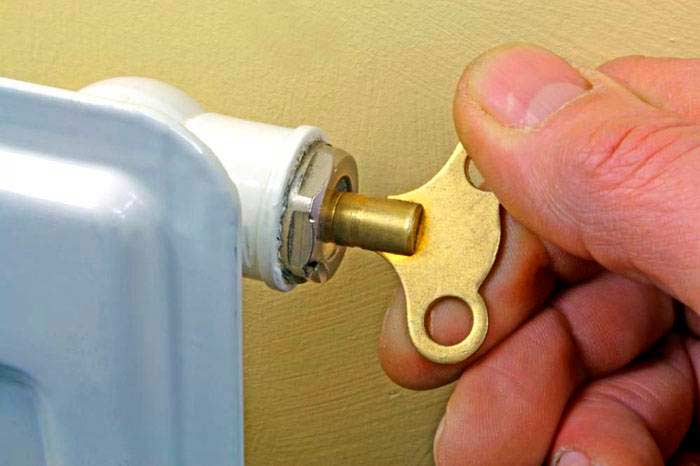

The adjusting screw is operated with a special tap wrench or a conventional screwdriver. The tap wrench is four-sided, very compact, and it is convenient for them to work even if the radiator is located in a place with difficult access.
The crane, in some cases, can be adjusted without a special tool.
The valve is turned by hand, which allows air to be vented.
Varieties
The air separation of the Mayevsky crane is of three types, which differ in the principle of operation and structure:


- Manual crane... It is a simple hand-operated device.If the battery does not evenly warm up, the tap is opened with a key or screwdriver, and after the air leaves the radiator, I wrap it back.
... There are differences in design and principle of operation from manual ones. Mayevsky's automatic valve is brass in the form of a cylinder, but a needle valve is not provided here. Instead, a plastic float is used. The principle of operation here is that the float moves in the presence of air through the system and opens or closes the shutter. Human intervention is not required here.
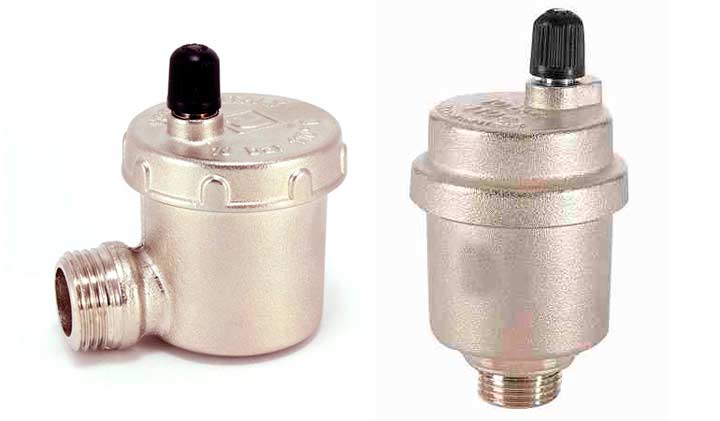
Automatic faucet
Such a crane works a little differently.
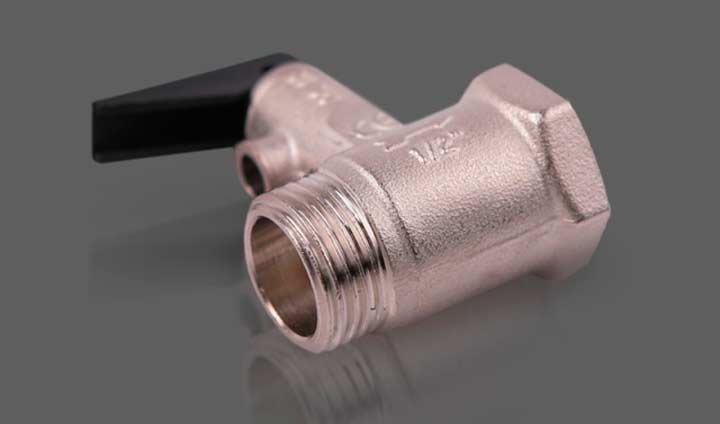
Safety valve.
The safety device monitors the pressure in the system. If the pressure rises above 15 atmospheres, the valve is triggered and begins to bleed the coolant from the heating system. This helps to prevent damage to elements in the system due to possible water hammer. The installation of a tap with an automatic valve is important for heating systems with polypropylene and metal-plastic pipes that are not able to withstand high pressure.
When choosing a specific crane model, it is necessary to take into account such nuances of the radiator as:

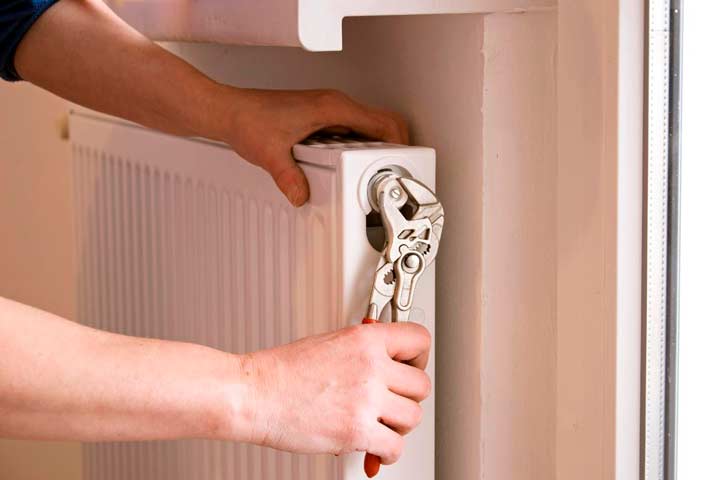
In a centralized heating system, it would be better to use a manual tap, which can be vented at any time.- It is also not advisable to install cranes with automatic control in apartment buildings with centralized heating. Since there is increased pollution here and the tap will be periodically clogged.

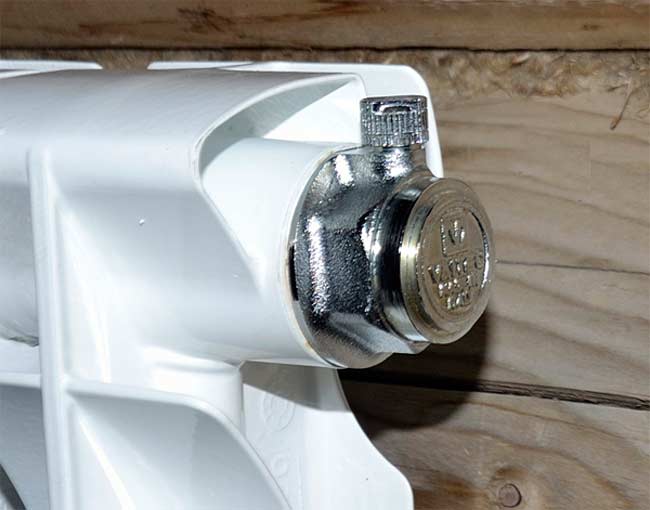
The automatic crane is used mainly in individual households with an autonomous system. In such a system, there is a maintenance of the cleanliness of the coolant.- Automation is also installed in places where access is difficult. This is, for example, if the radiator is located in a niche or recess, and it is relatively difficult to reach its end. A regular screwdriver will not help here.
In the case of a hard-to-reach location of the heating device, a special four-sided wrench can help. The old models of cast iron radiators are still used to the full. For cast-iron radiators, a Mayevsky manual crane is suitable. But the best option would be to use a special brass automatic air vent.
When choosing fromThe corrosion resistance of the material must also be taken into account. Many manufacturers use chrome-plated steel for their valves, which have a short lifespan. The best materials for parts are brass and stainless steel.
What should be done before carrying out work?


Installation on a radiator
Bleeding air by hand is not that difficult. This requires:
- Place a deep basin under the valve and put a floor cloth next to you.
- Counterclockwise, using a screwdriver or special wrench, turn the device one turn. This operation will release the air stream. If a lot of it has accumulated inside the battery, you can open the tap one and a half turns. Leave the valve in this position until all the air has left the system.
- After the characteristic hiss of air is over, the valve can be closed. This must be done as tightly as possible.
Note! If circulation pumps are used in the heating system, it is better to turn them off while air is bleeding. Otherwise, together with the air, the coolant will escape outward. It will flood the whole room, but the problem of the airlock will remain.
Recently, automatic Mayevsky cranes have appeared on sale. They eliminate the need for manual air bleeding.
How to install a Mayevsky crane
The valve is installed on the top of the battery on the opposite side of the coolant intake, because this is the place where air accumulates. It is also worth keeping in mind the subtleties of various systems.
On a note: With a vertical heating system, taps should be installed on the batteries of the upper floors. Also, they must be installed on all heating elements supplied to the riser below the connection axis. And with a horizontal system, the taps are mounted on all radiators, without exception.
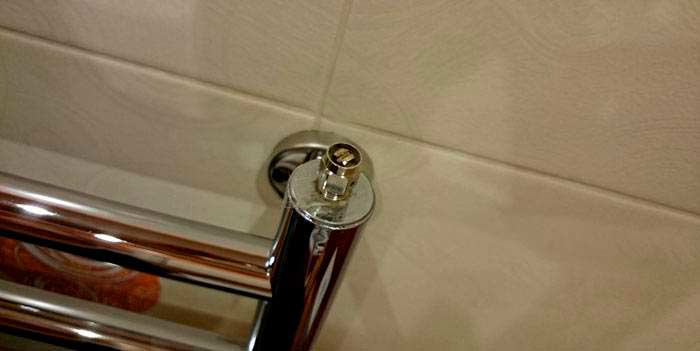

In the case of installing a Mayevsky crane on a battery standing on the floor, it must be placed at the highest point of the radiator. The adjusting screw points up.
As a rule, the bathroom has a heated towel rail, which is heated by the circulating heat carrier inside. Here they install a Mayevsky tap for a heated towel rail.
The absence of this valve in such a system can lead to air locks that stop the circulation of both the heating circuit and the hot water circuit. Therefore, the presence of this tap on heated towel rails will eliminate this problem.


When installing a Mayevsky crane for a heated towel rail, it must be placed strictly vertically using a special tee. The tee will move the working vertical axis to a horizontal position. This provision fulfills the requirements prescribed by the instruction. Namely, the air bleed hole should be directed in the opposite direction from the wall and be sloped downward.
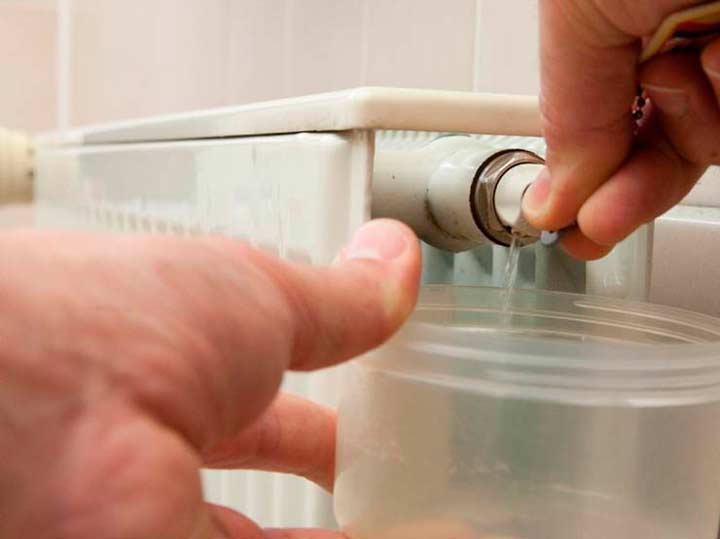

Immediately after the completion of the installation work of the heating system it is necessary to carry out airing... Because in the process of work, air in any case enters the radiators. Also, this event must be carried out including the system after the summer period. After all, air can also accumulate due to the release of hydrogen during the corrosive processes of a metal element. In radiators made of aluminum without a special coating, the release of this element is constantly observed inside and a chemical reaction occurs with the coolant.
How is the air valve installed?
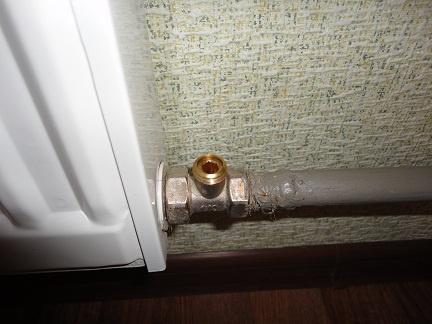

Place of installation
The described plumbing fixtures can be installed independently without the help of plumbers. The main thing is to choose the right device diameter. The crane is mounted on the battery on the opposite side from the coolant inlet.
Before starting work, the water from the radiators must be completely drained. Then remove the plug and screw in the Mayevsky tap instead. It has special rubber rings that will seal the joint. But experts recommend that you additionally use the FUM tape.
In modern heating devices made of aluminum, steel or bimetal, holes for the described devices are already provided, so their installation is quite simple. The air valve is installed in such a way that the hole through which the air is vented is on the side opposite to the wall and looks down from the radiator.
Features of operation
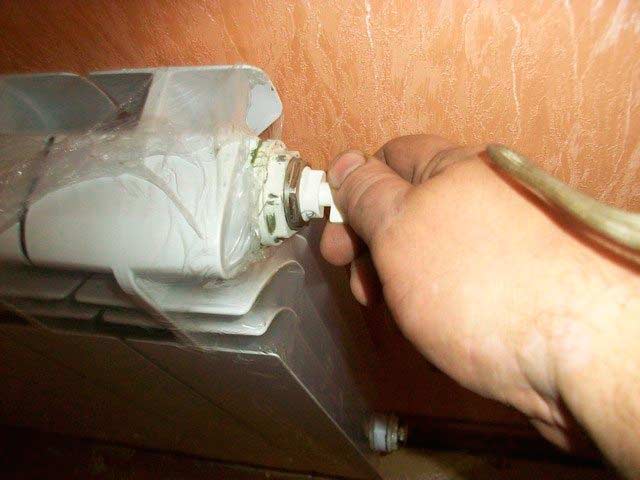

Let's see how to use the Mayevsky crane in work. First, put a container under the radiator and prepare a dry rag. Use a special wrench or a simple screwdriver to turn the locking screw. In this case, you need to turn counterclockwise and half a turn. Air will start to come out and then water will come out. It is necessary to wait for the moment when the liquid will flow without interruption. Then tighten the screw.
A case where the air has been removed and the radiator remains cold indicates a clogged system.
In order to clean a clogged battery, you need to seek help from a plumber.
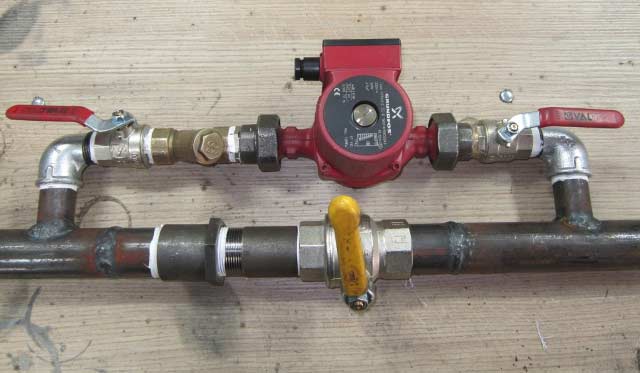

Note: If the heating system has a pump operating on the principle of forced circulation, then it will need to be turned off 10 minutes before the air lock is released.With the pump on, the water flow will carry air through the system and will not accumulate at the top of the battery.
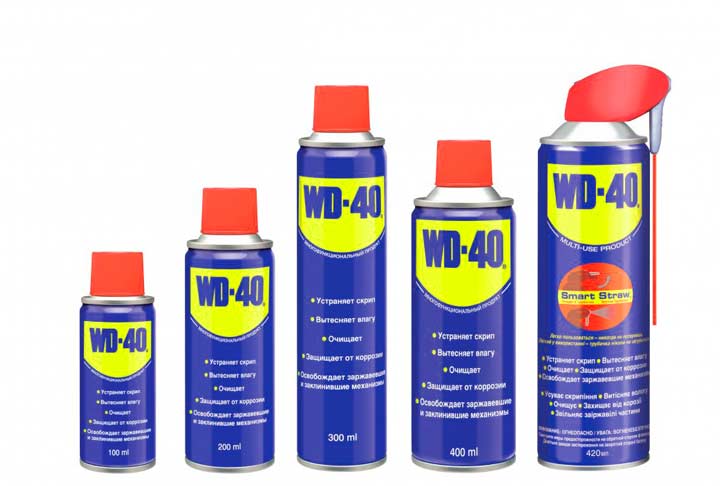

If there is a blockage in the opening of the Mayevsky tap, you can try to clean it yourself with a sharp object. Also, if the valve is not used for a long time, the adjusting screw will be difficult to rotate due to possible corrosion formations. If such a problem occurs, use a tool such as WD-40 spray lubricant. It works very quickly and helps to unscrew the screw easily.
Also, at the end of the heating period, grease the screw. In this case, there will be no destruction of the thread under the influence of the coolant.
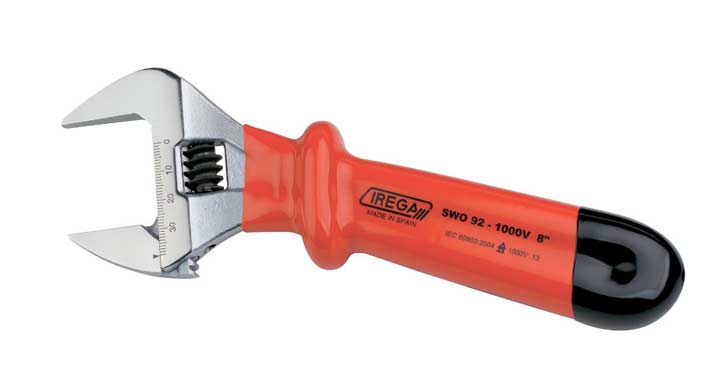

If it becomes necessary to replace the Mayevsky crane, you need to use two adjustable wrenches. One key holds the radiator cap, and the other unscrews the tap. If this is not observed, then when unscrewing the valve, the plug may loosen, which will lead to leakage.
If you monitor this device, do routine diagnostics and cleaning, it will last a long time without any problems.
Summarizing
Of course, each owner of heating devices based on a liquid coolant has the right to decide for himself how best to modify his system and whether to do it at all. But I would like to note that the use of the Mayevsky crane, firstly, will increase the efficiency of the entire installation, and secondly, it will facilitate maintenance of the batteries, and thirdly, it will not take a lot of money from you, because as you noticed the table given in the article demonstrates the cheapness of products ... Now you know what a Mayevsky crane is, the principle of operation and the nuances of operation.
We invite you to familiarize yourself with the Air valve for the radiator
Mayevsky crane price
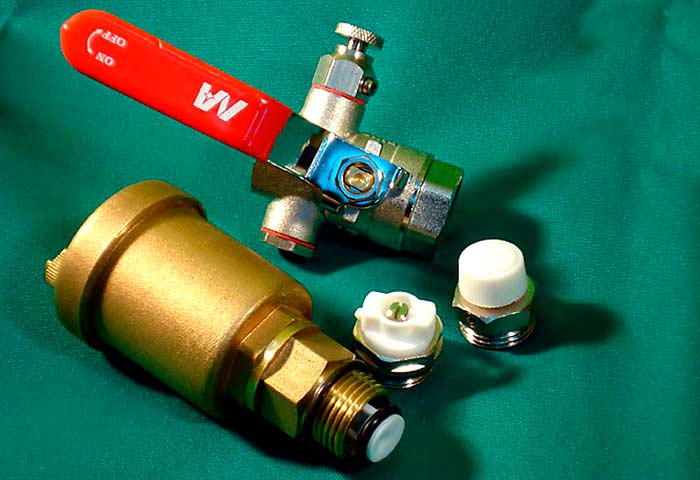

Now the plumbing market presents many types of Mayevsky faucets. There are domestic and foreign manufacturers, and various materials and components are used.
There are both metal and plastic taps for every taste.
The price will depend on indicators such as:
- a type;
- material;
- diameter.
The cost of the crane starts at thirty rubles.
Specifications
The main technical parameters of this device include:
- maximum permissible operating pressure and temperature in the heating system;
- the size of the connecting thread;
- material of manufacture;
- type of management.
Most of Mayevsky's cranes are designed for operating pressures up to 15 atm. and coolant temperature up to 120 ° С.
The size of the external pipe threads by which the unit is mounted to the radiator is standardized and can be half an inch, three quarters of an inch, or an inch.
There is a special modification for old cast-iron radiators with a small body diameter and an external metric thread, with which the valve is screwed into the radiator cap (plug).
The material is metal with anti-corrosion properties (most often brass or steel with chrome or nickel coating).
An ordinary screwdriver, a special square wrench or a wing-type handle can be used to control the crane.
Application of the Mayevsky crane for cast iron radiators
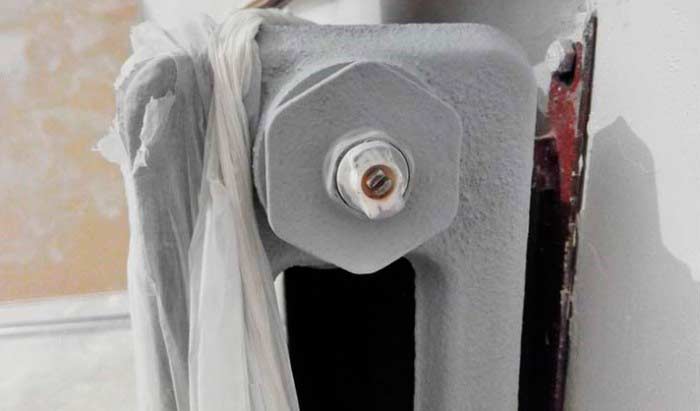

In a cast-iron radiator, there is no bore for a standard valve in the plug-plug. There are craftsmen who are trying to install a valve to remove an airlock by drilling and tapping on a cast iron plug. But this structure can be disrupted by such a phenomenon as water hammer when pressure rises. The way out of this situation is to install an automatic air vent that matches the size of the cast-iron radiator plug. And also they are not afraid of blockage.
If there are solid particles of various debris in the coolant, then a mechanical standard filter must be installed directly in front of the tap to drain water.
Operating principle
It is impossible to completely remove air from the radiators. It is very difficult to prevent its appearance.
Mayevsky's crane serves for local bleeding of air from the heating system.
The device is a needle-type shut-off valve. Such a mechanism is reliable, compact and functional. The valves are installed on autonomous heating radiators.
Installation on central heating complicated by additives that are added to the water. They clog and disable the locking devices.
In the classic version, the device is made of brass. The alloy is not subject to corrosion and high temperatures.
The device is carried out in a round body, inside which the needle valve cone is located.
Adjustment is made from the outside with a locking screw.
When the valve is closed, the device keeps water within the circuit.
Turning the screw to the side, opens the air outlet.
The valve body is covered with a plastic sheath.
Product modifications vary, but the principle of operation remains the same for all models.
The main difference is the thread diameter.
It matches the threads of the radiators produced - one inch, ¾ ", ½".
The Mayevsky crane is regulated with a special screw or screwdriver, which allows it to be used in hard-to-reach places.
Mayevsky crane in pneumatic systems
The technical feature of the Mayevsky crane is the uniqueness of the design.
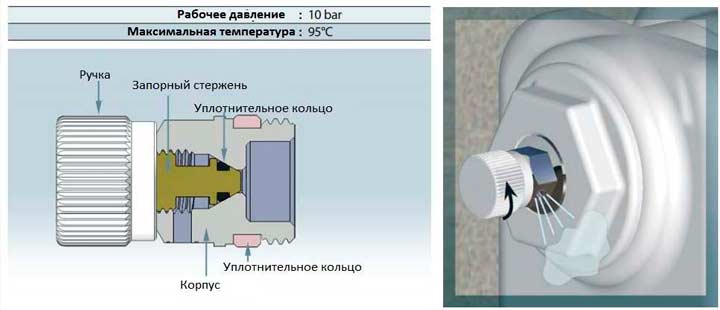

It can be used not only to remove air, but also liquid. Namely, fluid from a pneumatic system in which there is increased air pressure. The entry of compressed air from the compressor into the system is accompanied by a large amount of water vapor. Special freezing devices and various filters remove excess moisture. Large amounts of liquid can accumulate in the pipes during long-term operation. It accumulates in the lower area of the pneumatic lines, and is also sprayed throughout the system. Water must not come into contact with the working pneumatic device. This is where Mayevsky's crane turns out to be the salvation. Only in this situation is it mounted in the lower part of the circuit. The bleeding process begins with getting rid of the water and ends with the release of air. Then the tap is closed and the system is again sealed.
Why does air accumulate in the system?
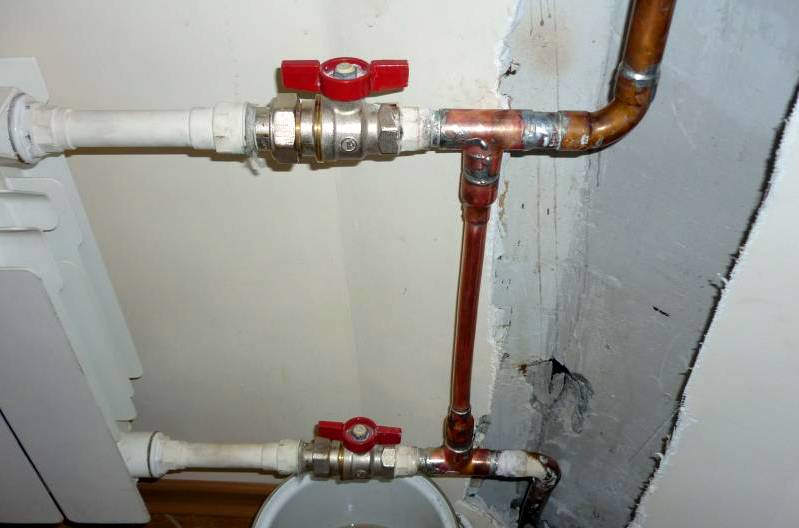

Underrun tap
Simple in design and easy to maintain, air vents are also an integral technical part of any heating system. Deliberate exclusion of devices from the system threatens to result in grave consequences, up to the defrosting of batteries and pipes in winter. It is impossible to ignore Mayevsky's taps, they just need to be selected for a specific system.


